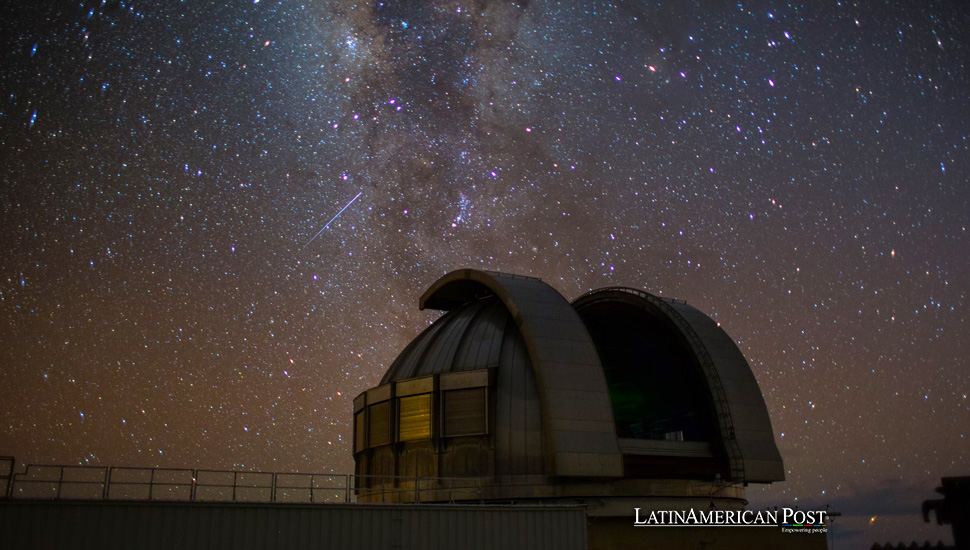Chile Attempts Leap to Become Global Leader in Astronomy by 2030

Chile is poised to dominate over 50% of the world’s astronomical capacity by the end of this decade, a significant leap from its current 30%, with the construction of massive telescopes, says Bruno Dias, President of the Chilean Society of Astronomy.
Chile’s Astronomical Revolution: A Leap Towards Global Leadership
Chile, renowned for its pristine skies and optimal geographical conditions for astronomical observations, is on the brink of an astronomical revolution. According to Bruno Dias, the Brazilian President of the Chilean Society of Astronomy (Sochias), Chile is expected to jump from holding 30% to more than 50% of the world’s astronomical capacity by the end of this decade. This projection is tied to the completion of several significant telescopes within its borders, marking a new era in global astronomy.
The Andes Mountains and the Pacific Ocean provide exceptional natural advantages for Chile in this field. High altitudes with minimal cloud cover, a turbulence-free atmosphere, and stable temperatures have made the South American country an unrivaled host for international astronomical endeavors.
Dias, speaking from the University Andrés Bello (UAB) ‘s Institute of Astrophysics, highlighted the upcoming milestones in Chilean astronomy: the world’s largest telescope, the ELT with a 39-meter mirror; the Vera Rubin telescope, starting next year with the world’s most giant camera; the Alma radio observatory with the most antennas globally; and the world’s highest telescope, Japan’s TAO.
Northern Chile: The Powerhouse of World Astronomy
Basting some of the cleanest skies on the planet, Northern Chile is rapidly becoming the powerhouse and epicenter of world astronomy. The region competes globally with numerous international collaborations, scientific awards, and publications in prestigious journals.
Dias emphasized that hosting foreign telescopes was a strategic long-term move that opened “an opportunity and advantage” for Chile. The country’s commitment to astronomy transcends political differences, with successive administrations welcoming foreign telescopes and facilitating their import and installation. In return for benefits like tax exemptions, consortia or countries owning the equipment provide Chilean universities with 10% of the telescopes’ observing time.
This astronomical boom in Chile has even reached educational institutions. Over the last decade, there’s been a doubling in the number of academic astronomers and a tripling in Chilean universities conducting astronomical research.
Challenges in the Astronomical Boom
However, this rapid growth brings significant challenges. Chilean scientists and researchers are preparing for a digital transformation in astronomy to handle the vast volumes of data generated by observatories and computational simulations. The need for increased computer capacity and resources for data storage, analysis, and transfer is paramount, as astronomy is inherently an internationally collaborative science.
Another major challenge is producing the necessary technology for observatories, telescopes, and other installations. Dias noted that more components are being developed in technology, and even the Ministry of Science is keen on pushing Chile to play a leading role in constructing observatories.
The Uncharted Universe: A Continuous Quest for Knowledge
Convinced that the exploration of the universe is just beginning and that humanity has only scratched the surface of what’s to be discovered, Dias reflects, “The more we discover, the more questions arise, and therefore, the less we know.”
Also read: Panama Inaugurates Cultural Mega-Complex
As Chile strides towards astronomical superlatives, it is enhancing its position in the global scientific community and contributing significantly to humanity’s understanding of the universe. The development and installation of these telescopes are not just technological feats but also represent the country’s long-standing commitment to scientific exploration and international collaboration.
In conclusion, Chile’s journey in astronomy is a fascinating story of leveraging natural advantages, strategic planning, and international collaboration. As the country gears up to house the world’s most significant astronomical instruments, it stands on the brink of unlocking new cosmic mysteries, offering insights into the universe’s vast and uncharted territories. This astronomical ascendancy places Chile at the forefront of global astronomy. It serves as a beacon of inspiration for future scientific endeavors worldwide.





